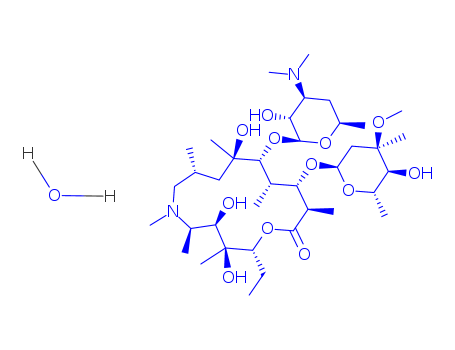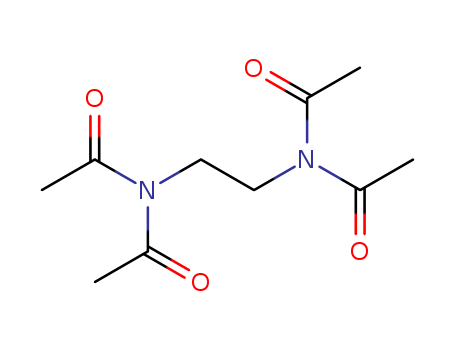
10543-57-4
- Product Name:Tetraacetylethylenediamine
- Molecular Formula:C10H16N2O4
- Purity:99%
- Molecular Weight:228.248
Product Details;
CasNo: 10543-57-4
Molecular Formula: C10H16N2O4
Appearance: off-white to beige granular powder
Buy High Quality High Purity 99% Tetraacetylethylenediamine 10543-57-4 Best Price
- Molecular Formula:C10H16N2O4
- Molecular Weight:228.248
- Appearance/Colour:off-white to beige granular powder
- Melting Point:149-154 °C
- Refractive Index:1.4550 (estimate)
- Boiling Point:386.4 °C at 760 mmHg
- PKA:-1.23±0.70(Predicted)
- Flash Point:174.8 °C
- PSA:74.76000
- Density:0.9 g/cm3
- LogP:-0.22360
Tetraacetylethylenediamine(Cas 10543-57-4) Usage
|
Description |
Tetraacetylethylenediamine (TAED) is a white, organic solid serving as a bleach activator in laundry detergents, paper pulp, dishwashing detergents, and additives. Its chemical formula is (CH₃C(O))₂NCH₂CH₂N(C(O)CH₃)₂, with a molecular formula of C10H16N2O4. Produced by reacting ethylenediamine with acetic acid and acetic anhydride, TAED is stable under standard storage conditions but should be kept away from metals, dust generation, heat, and ignition sources. |
| Uses | Environmentally safe and readily biodegradable, TAED reacts with peroxide to generate peracetic acid, a potent bleaching agent and disinfectant. Commonly abbreviated as TAED, this compound plays a crucial role in enhancing the bleaching effectiveness of laundry detergents and paper pulp processes. |
10543-57-4 Relevant articles
Kinetic model of acylation of diacetylethylenediamine
Platonova,Akhmetshin,Kossoi,Vdovets,Laskin,Malin,Sitdikov
, p. 1808 - 1812 (2008)
Descriptive kinetics of synthesis of tet...
Kinetics of the hydrolysis and perhydrolysis of tetraacetylethylenediamine, a peroxide bleach activator
D. Martin Davies and Michael E. Deary
Journal of the Chemical Society, Perkin Transactions 2, Issue 10, 1991
Hydrogen peroxide and water react with tetraacetylethylenediamine (TAED) to form consecutively triacetylethylenediamine and diacetylethylenediamine with the release of two molecules of peracetic acid or acetic acid. The effect of pH, specific buffers and temperature on the rates of hydrolysis and perhydrolysis are compared.
10543-57-4 Process route
-
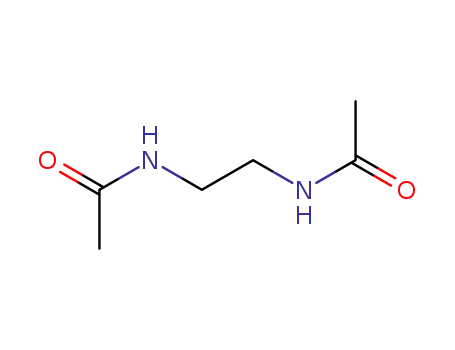
- 871-78-3
N,N'-diacetylethylenediamine

-

- 108-24-7
acetic anhydride

-
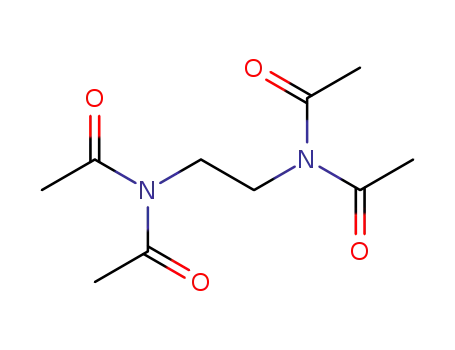
- 10543-57-4
N,N,N',N'-tetraacetylethylenediamine
| Conditions | Yield |
|---|---|
|
With solid acid SO4(2-)/Al2O3; at 110 - 160 ℃; for 4.5h; Reagent/catalyst; Temperature;
|
81.9% |
-

- 108-24-7
acetic anhydride

-

- 10543-57-4
N,N,N',N'-tetraacetylethylenediamine
| Conditions | Yield |
|---|---|
|
|
10543-57-4 Upstream products
-
108-24-7

acetic anhydride
-
137706-80-0
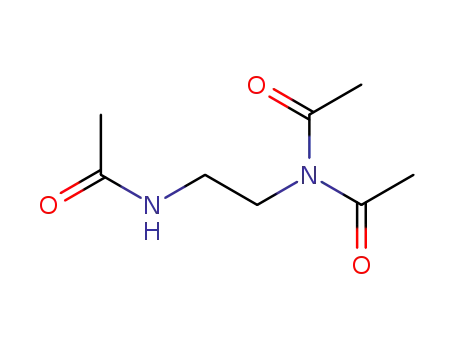
N,Ν,Ν'-triacetylenediamine
-
871-78-3

N,N'-diacetylethylenediamine
10543-57-4 Downstream products
-
618-42-8

1-piperidin-1-yl-ethanone
-
79-21-0
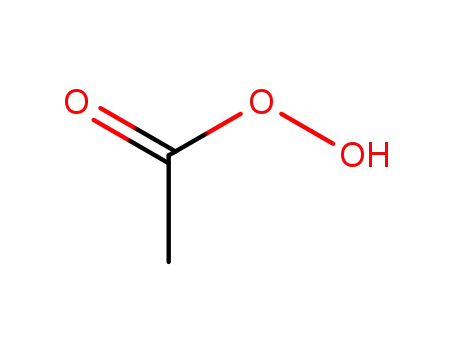
peracetic acid
-
137706-80-0

N,Ν,Ν'-triacetylenediamine
-
64-19-7
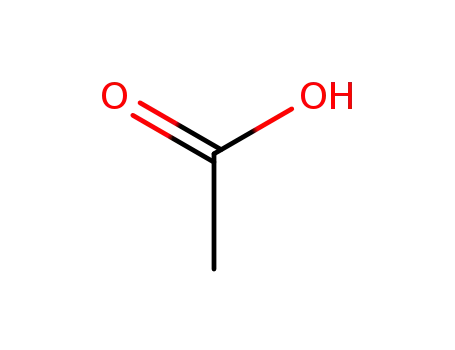
acetic acid
Relevant Products
-
Azithromycin dihydrate
CAS:117772-70-0
-
Calcium bromide
CAS:7789-41-5
-
Bakuchiol
CAS:10309-37-2

